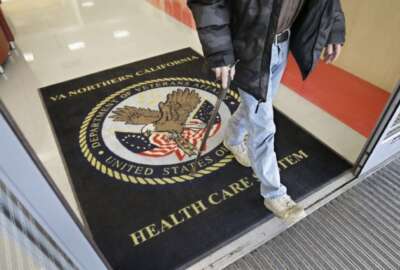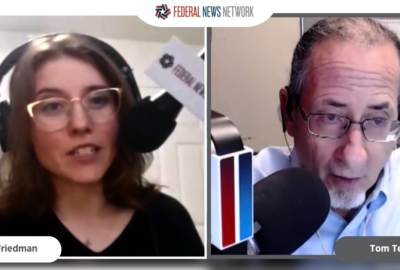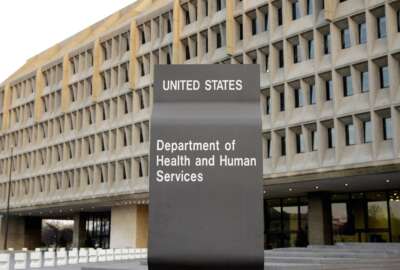OPM directs agencies to quickly comply with Trump’s return-to-office mandate
Agencies should aim for a 30-day deadline to implement Trump’s return-to-office executive order, according to a memo from the Office of Personnel Management.
Agencies have until the end of the day Friday to revise their telework policies and begin ordering federal employees to work onsite full-time, according to a return-to-office memo from the Office of Personnel Management Wednesday evening.
OPM is recommending agencies target a 30-day deadline to be in full compliance with the return-to-office directive President Donald Trump signed on his first day in office. Trump’s executive order told agencies to return their federal employees to work at the office “as soon as practicable.” The order also called for agencies to end “remote work arrangements” and require employees to work in person full-time, while leaving room for some exemptions.
OPM’s latest memo offers further details on Trump’s initial executive order. Since the order only referenced remote work arrangements, and not telework arrangements, the Jan. 20 directive led to some initial confusion.
“The executive order is quite unclear in terms of exactly what it’s covering, because it does use the term remote work,” Max Stier, president and CEO of the Partnership for Public Service, told reporters during a press conference Tuesday.
For the federal workforce, “telework” and “remote work” are two distinct types of work arrangements for federal employees. Generally, federal employees with telework agreements are expected to report to their “official duty stations” on a “regular and recurring basis.” Remote agreements for federal employees, however, let employees work from an “alternative worksite,” and remote employees are generally not expected to report to work onsite at an agency.
OPM’s memo now calls for a full return to in-person work for a majority of currently teleworking federal employees. Agencies and federal supervisors can grant exemptions to the return-to-office mandate for individuals with a disability, a qualifying medical condition or another “compelling reason,” the memo states.
Additionally, employees who are located more than 50 miles away from an agency office should be designated to “the most appropriate agency office, based on the employee’s duties and job function,” the memo states.
OPM’s memo also tells agencies to submit their expected date for being in full compliance with the return-to-office directive. Agencies should notify all employees of Trump’s return-to-office mandate and have their telework managing officers oversee compliance with the guidance, OPM said.
The actual implementation of the mandate will likely vary by agency. But some agencies, such as the Department of Homeland Security, have already announced return-to-office directives for their teleworking employees as a result of Trump’s order this week.
Currently, 54% of the federal workforce works entirely onsite due to the needs of their jobs. Telework-eligible federal employees comprise about 46% of the federal workforce, and they are spending an average of 60% of their work hours in person, according to May 2024 data from the Office of Management and Budget. About 10% of federal employees work entirely remotely.
The move toward a more hybrid federal workforce began in April 2023 when the Biden administration called on agencies to strike a balance between in-person work and telework for eligible federal employees. But the Trump administration has taken a harder stance on returning to the office.
“The [presidential mandate] reflects a simple reality. The only way to get employees back to the office is to adopt a centralized policy requiring return-to-work for all agencies across the federal government,” OPM Acting Director Charles Ezell wrote in the memo. “Seeking to cajole individual agencies to try to get employees to return to the worksite has not succeeded.”
In the memo, Ezell also said fully in-person work is needed for better efficiency and accountability, as well as to fill federal office space.
“Virtually unrestricted telework has led to poorer government services and made it more difficult to supervise and train government workers,” Ezell wrote.
Critics of the full return-to-office mandate, however, said telework options have been available to eligible federal employees for years — well before the COVID-19 pandemic — and that they are an important tool for the federal workforce.
“The reality of this is that there has been bipartisan support for telework in the federal space for many, many years, because it’s been shown — in certain circumstances and when well-applied — to provide both for better performance and improved ability to recruit the best talent for federal positions,” Stier told reporters earlier this week.
“Telework began decades ago in the federal government as a smart, cost-effective program allowing agencies to downsize their office space and lower real estate costs,” Doreen Greenwald, national president of the National Treasury Employees Union, said in a statement. “Certain positions in the government have been eligible to telework part of each week for years — well before the pandemic — and they have done so successfully under strict supervision while being held to the same productivity and accountability standards as non-teleworking employees.”
Many federal employees themselves have also said they’re more productive while having the ability to telework, according to a recent survey Federal News Network conducted. Many respondents expressed concerns about a “one-size-fits-all” return-to-office policy having adverse impacts on productivity, efficiency, employee retention and more. When asked about office space, 44% of respondents said they were “extremely concerned” about their agencies having enough space to accommodate a full return-to-office mandate.
Federal unions have also pointed to existing provisions in collective bargaining agreements that secure telework arrangements for federal employees.
“OPM’s guidance explicitly states that collective bargaining obligations and applicable law must be met when carrying out the president’s memorandum, so hybrid work schedules detailed in our collective bargaining agreements remain legally binding,” American Federation of Government Employees spokesperson Tim Kauffman said in an email to Federal News Network. “Should agencies implement policies contrary to our contracts, employees should comply, but we as a union will be prepared to file grievances.”
Copyright © 2025 Federal News Network. All rights reserved. This website is not intended for users located within the European Economic Area.
Drew Friedman is a workforce, pay and benefits reporter for Federal News Network.
Follow @dfriedmanWFED






